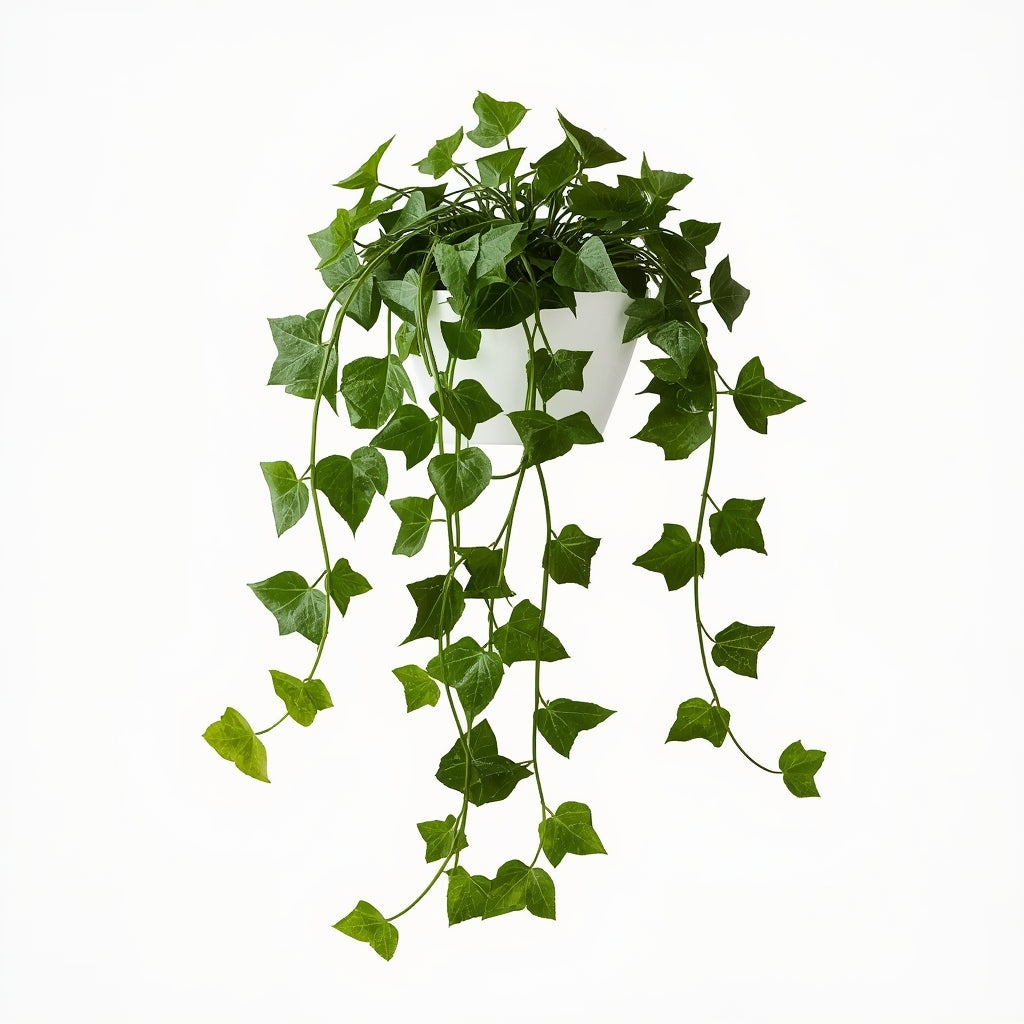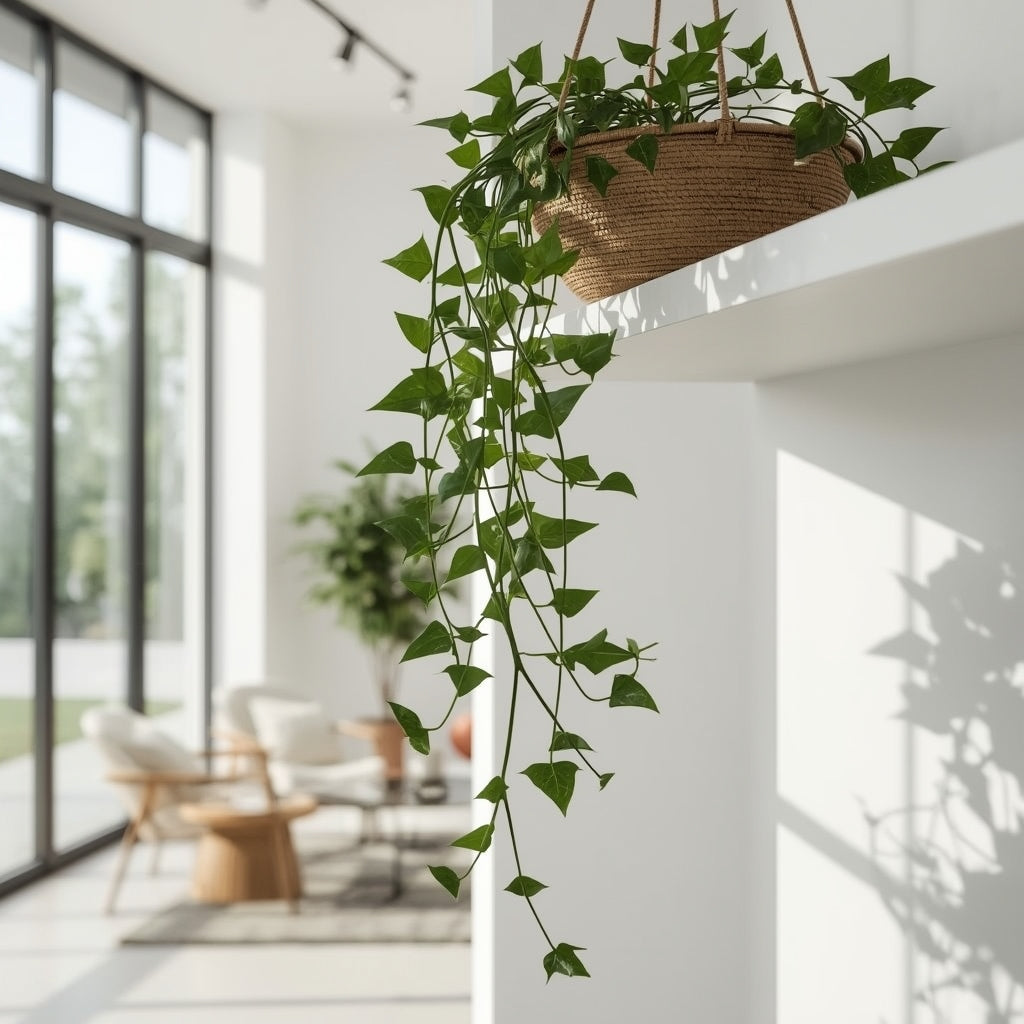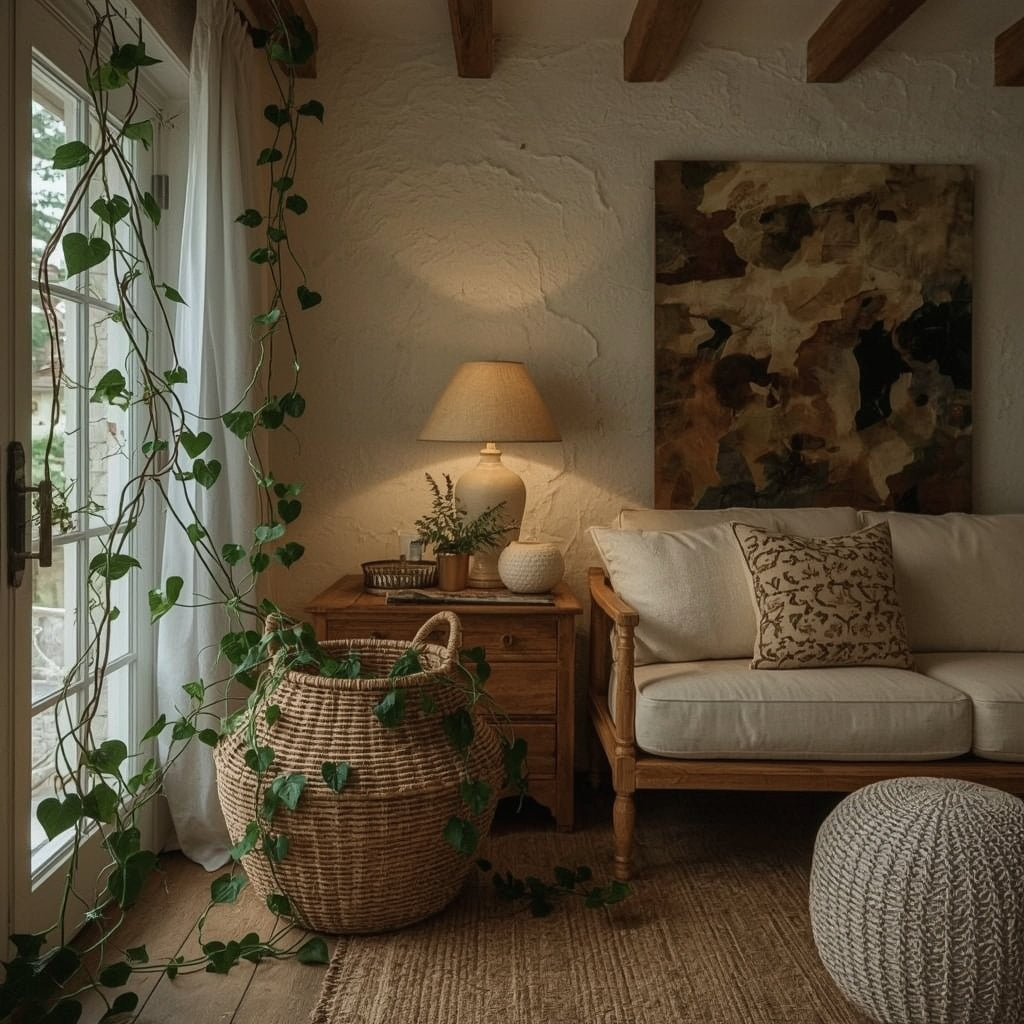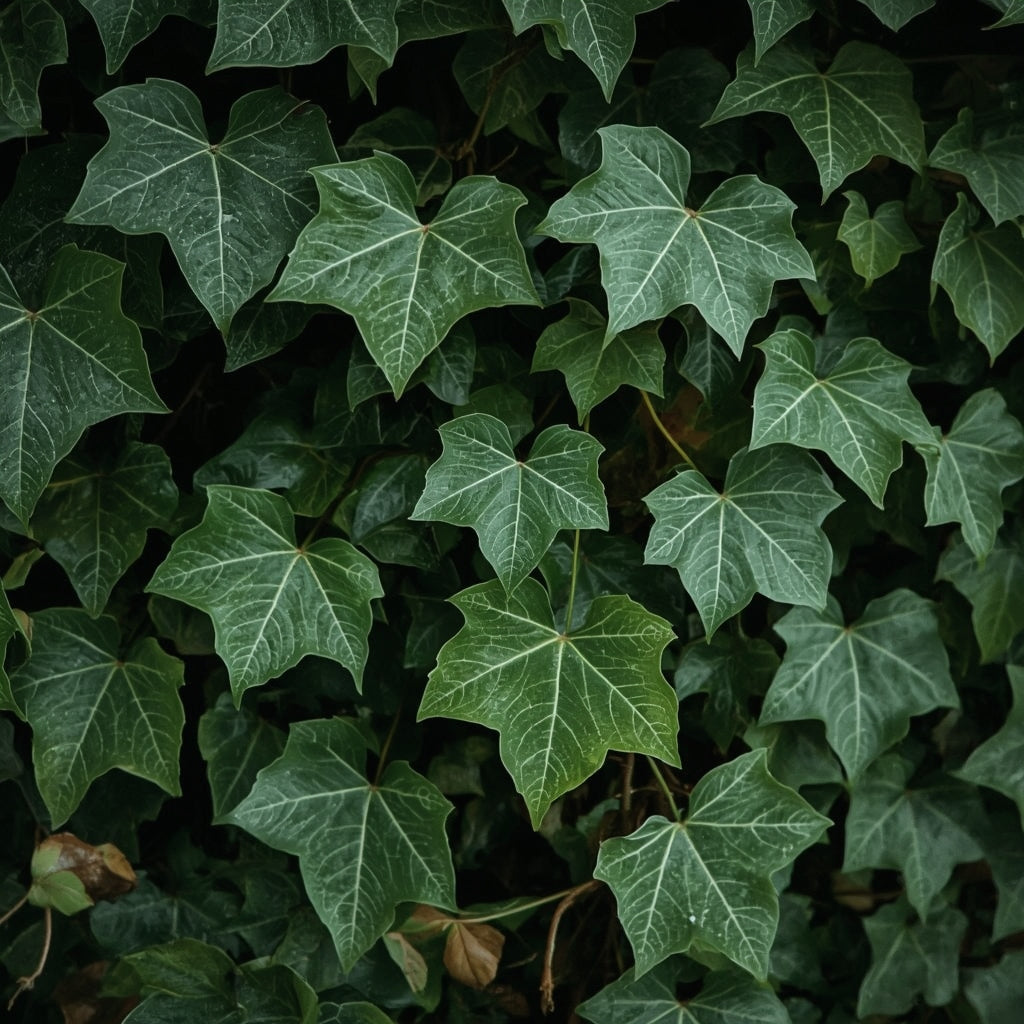English Ivy: The Classic Cascading Houseplant for Timeless Elegance
English Ivy Care Guide
Light
Bright, indirect light; tolerates some direct morning sun.
Water
Allow top inch of soil to dry between waterings.
Humidity
Average household humidity; mist occasionally for best growth.
Temperature
50–70°F (10–21°C), prefers cooler temperatures than most houseplants.
Fun Facts About English Ivy
Ancient heritage
Used by Greeks and Romans as symbols of fidelity and eternal life.
Air purifier champion
NASA rates it among the top 10 air-cleaning houseplants.
Growth powerhouse
Can grow 6-8 feet indoors with proper support.
Leaf evolution
Young leaves have 3-5 lobes; mature leaves become oval-shaped.
Natural climber
Uses tiny rootlets to climb surfaces in nature.
Troubleshooting Your English Ivy
Yellow leaves
Usually from overwatering or poor drainage.
Brown, crispy edges
Too much direct sun or very low humidity.
Leggy, sparse growth
Insufficient light - move to brighter location.
Small insects on leaves
Spider mites love dry conditions - increase humidity.
Wilting despite moist soil
Root rot from overwatering - reduce frequency.




